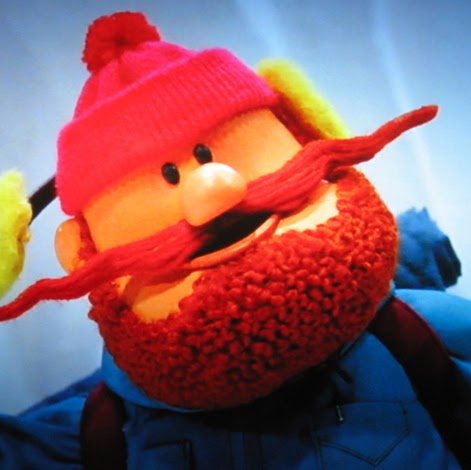Christopher Lee Houser
age ~51
from Cocoa Beach, FL
- Also known as:
-
- Christopher L Houser
- Chris L Houser
- Christophe L Houser
- Christophe R Houser
- Chris L Hausen
- Christian Hauser
Christopher Houser Phones & Addresses
- Cocoa Beach, FL
- Sebastian, FL
- Melbourne, FL
- Cape Canaveral, FL
- Iron Station, NC
- Lincolnton, NC
- Myrtle Beach, SC
License Records
Christopher Scott Houser
License #:
70205 - Expired
Category:
Nursing
Issued Date:
Feb 1, 2010
Effective Date:
Nov 10, 2012
Expiration Date:
Oct 31, 2012
Type:
Registered Nurse
Us Patents
-
Fiber Optic Furcation Assembly Having Feature(S) For Cable Management
view source -
US Patent:7903925, Mar 8, 2011
-
Filed:Feb 27, 2009
-
Appl. No.:12/394140
-
Inventors:Terry L. Cooke - Hickory NC, US
Christopher S. Houser - Newton NC, US
Tory A. Klavuhn - Newton NC, US -
Assignee:Corning Cable Systems LLC - Hickory NC
-
International Classification:G02B 6/00
G02B 6/44 -
US Classification:385136, 385100, 385134
-
Abstract:Fiber optic cable assemblies having a fiber optic cable, a furcation body, and one or more furcated legs are disclosed herein. In embodiments disclosed herein, the furcation body comprises a first end and a second end opposite the first end, the first end having the fiber optic cable extending therefrom, and the second end having one or more furcated legs extending therefrom. The furcation body can include one or more features that facilitate cable management by supporting cabling components used in making fiber optic interconnections. The cable management features of the fiber optic cable assemblies advantageously inhibit sagging, facilitate access to fiber optic interconnections, and/or improve air flow paths between fiber optic interconnections.
-
Fiber Optic Cable Assembly
view source -
US Patent:8328432, Dec 11, 2012
-
Filed:Nov 23, 2010
-
Appl. No.:12/953207
-
Inventors:Terry L. Cooke - Hickory NC, US
Christopher S. Houser - Newton NC, US
James M. Wilson - Granite Falls NC, US -
Assignee:Corning Cable Systems LLC - Hickory NC
-
International Classification:G02B 6/38
-
US Classification:385 62, 385 53, 385 54, 385 58, 385 60, 385 69, 385 72, 385 75, 385 76, 385 78, 385 80, 385 81, 385 87, 385 91, 385 92
-
Abstract:A fiber optic cable assembly includes a fiber optic connector and a fiber optic cable having at least one strength element, the connector and cable held together by a crimp band. The crimp band may include at least one lateral aperture on at least one end for inspecting the disposition of the strength element prior to crimping to ensure a uniform distribution of the strength element.
-
Optical Fiber Cable And Interconnect Assembly
view source -
US Patent:20130163932, Jun 27, 2013
-
Filed:Mar 15, 2012
-
Appl. No.:13/421463
-
Inventors:Terry L. Cooke - Hickory NC, US
Christopher S. Houser - Newton NC, US
William c. Hurley - Hickory NC, US
James M. Wilson - Granite Falls NC, US -
International Classification:G02B 6/44
B23P 17/04
B23P 11/02
G02B 6/36 -
US Classification:385 76, 385114, 385100, 29428, 29446
-
Abstract:An optical fiber cable includes a jacket and modules including optical fibers. The jacket has an interior that forms an elongate conduit between proximal and distal ends. The modules extend lengthwise through the conduit without being bound together in a pattern of twisting or wound together in a pattern of stranding. Also, the jacket and modules are sized such that free space is provided within the conduit between the modules and the jacket. The jacket is at least ten meters long, and the orientation, alignment, and size of the modules allow individual modules to slide lengthwise relative to one another through the conduit. Pulling one of the modules from the proximal end of the jacket while holding the other modules fixed at the distal end of the jacket draws the one module further into the jacket on the distal end of the jacket.
-
Fan-Out Kit For A Furcation System
view source -
US Patent:20130183012, Jul 18, 2013
-
Filed:Mar 14, 2012
-
Appl. No.:13/420110
-
Inventors:Alma Delia Cabanne Lopez - Reynosa, MX
Terry L. Cooke - Hickory NC, US
Christopher S. Houser - Newton NC, US
Diego Maldonalo Jimenez - Reynosa, MX
Matthew W. Smith - Lenoir NC, US
James M. Wilson - Granite Falls NC, US -
International Classification:G02B 6/44
B23P 17/04
G02B 6/46 -
US Classification:385100, 29428, 29460, 294262
-
Abstract:A furcation system of an optical fiber assembly includes a fan-out and a transition tube. The fan-out includes a surface and stations. The surface is flexible such that the surface is configured to be changed from flat to curved. The stations are coupled to one side of the surface and are configured to receive and hold sub-units of an optical fiber cable, while allowing the sub-units to project from the stations. The stations are spaced apart from one another such that the stations provide separation between the sub-units received by the stations. Bending of the surface moves the stations from a planar arrangement to a three-dimensional arrangement such that the sub-units may project from the stations of the fan-out in planar and three-dimensional arrays.
-
Cable Leg And Connector Management System
view source -
US Patent:20130209037, Aug 15, 2013
-
Filed:Mar 14, 2012
-
Appl. No.:13/420079
-
Inventors:Terry L. Cooke - Hickory NC, US
Christopher S. Houser - Newton NC, US
Ronald A. Leonard - Connelly Springs NC, US
James M. Wilson - Granite Falls NC, US -
International Classification:G02B 6/38
-
US Classification:385 59
-
Abstract:An interconnect assembly includes an optical fiber cable, legs, connectors, and covers. The optical fiber cable includes a jacket and sub-units. The jacket has an interior defining a passage and the sub-units extend through the passage and include optical fibers extending lengthwise through the sub-units. The legs of the interconnect assembly extend from the passage on an end of the jacket, where the legs are continuations of or extensions from the sub-units such that the optical fibers further extend through the legs. The connectors are attached to the optical fibers on distal ends of the legs and the covers are attached to the connectors. The covers each include an end having a track for wrapping one or more of the legs over in order to package the legs and connectors, such as for placement of the legs and connectors within a pulling grip for installation of the interconnect assembly through a duct.
-
Port Tap Fiber Optic Modules, And Related Systems And Methods For Monitoring Optical Networks
view source -
US Patent:20130308915, Nov 21, 2013
-
Filed:Oct 30, 2012
-
Appl. No.:13/663949
-
Inventors:Scott Eaker Buff - Hickory NC, US
Terry Lee Cooke - Hickory NC, US
Christopher Shawn Houser - Hickory NC, US
Ronald Alan Leonard - Connelly Springs NC, US
Brian Keith Rhoney - Hickory NC, US -
International Classification:G02B 6/00
-
US Classification:385135, 385134
-
Abstract:Port tap fiber optic modules and related systems and methods for monitoring optical networks are disclosed. In certain embodiments, the port tap fiber optic modules disclosed herein include connections that employ a universal wiring scheme. The universal writing scheme ensure compatibility of attached monitor devices to permit a high density of both live and tap fiber optic connections, and to maintain proper polarity of optical fibers among monitor devices and other devices. In other embodiments, the port tap fiber optic modules are provided as high-density port tap fiber optic modules. The high-density port tap fiber optic modules are configured to support a specified density of live and passive tap fiber optic connections. Providing high-density port tap fiber optic modules can support greater connection bandwidth capacity to provide a migration path for higher data rates while minimizing the space needed for such fiber optic equipment.
-
High-Density Port Tap Fiber Optic Modules, And Related Systems And Methods For Monitoring Optical Networks
view source -
US Patent:20130308916, Nov 21, 2013
-
Filed:Oct 30, 2012
-
Appl. No.:13/663975
-
Inventors:Scott Eaker Buff - Hickory NC, US
Terry Lee Cooke - Hickory NC, US
Christopher Shawn Houser - Hickory NC, US
Ronald Alan Leonard - Connelly Springs NC, US
Brian Keith Rhoney - Hickory NC, US -
International Classification:G02B 6/00
-
US Classification:385135
-
Abstract:Port tap fiber optic modules and related systems and methods for monitoring optical networks are disclosed. In certain embodiments, the port tap fiber optic modules disclosed herein include connections that employ a universal wiring scheme. The universal writing scheme ensure compatibility of attached monitor devices to permit a high density of both live and tap fiber optic connections, and to maintain proper polarity of optical fibers among monitor devices and other devices. In other embodiments, the port tap fiber optic modules are provided as high-density port tap fiber optic modules. The high-density port tap fiber optic modules are configured to support a specified density of live and passive tap fiber optic connections. Providing high-density port tap fiber optic modules can support greater connection bandwidth capacity to provide a migration path for higher data rates while minimizing the space needed for such fiber optic equipment.
-
Multi-Fiber Fiber-Optic Connector With Switchable Polarity Key
view source -
US Patent:20130322825, Dec 5, 2013
-
Filed:Jun 4, 2012
-
Appl. No.:13/487734
-
Inventors:Terry L. Cooke - Hickory NC, US
Christopher S. Houser - Newton NC, US
Ronald A. Leonard - Connelly Springs NC, US
James M. Wilson - Granite Falls NC, US -
International Classification:G02B 6/38
-
US Classification:385 59
-
Abstract:A multi-fiber fiber optic connector is configured to include a switchable polarity key that can be used to define first and second polarity configurations for the connector. The connector has a multi-fiber ferrule surrounded by an inner housing. The inner housing has top and bottom recesses sized to accommodate the polarity key. The polarity key is removably secured in either a top or bottom recess using a latching feature. The polarity of the connector can be switched by moving the polarity key from one position in the connector to the other rather than having to disassemble the connector.
Resumes

Christopher Houser
view source
Christopher Houser
view source
Program Support Assistant
view sourceWork:
Resources For Independence of Virginia
Program Support Assistant
Program Support Assistant

Christopher Houser
view sourceLocation:
United States
Flickr

Christopher Houser
view source
Christopher Houser
view source
Christopher Houser
view source
Christopher Houser
view source
April Shaw Chris Houser
view source
Christopher Houser
view source
Christopher Houser
view source
Chris Houser Doran
view sourceClassmates

Christopher Houser
view sourceSchools:
A.C. Flora Columbia SC 1997-2001
Community:
Beverly Cranford, Jack Losier, Katura Haywood

Christopher Houser
view sourceSchools:
Beth Haven Christian School Louisville KY 1988-1992
Community:
D Fisher, Renea French, Mark Tabor, Vickie Davidson

Christopher Houser
view sourceSchools:
Edgefield School Canton OH 1976-1977, Our Lady of Peace School Canton OH 1977-1985
Community:
Maria Pellegrino

Christopher Houser
view sourceSchools:
Riverside High School Boardman OR 1992-1996
Community:
Tony Rodriguez, Alejandra Torres, Petra Flores, Michael Thomas, Tracey Kosmos, Paula Moore, Joanne Hurst, Kassandra Morris, Terry Montigue, Shane Nelson

Christopher Houser
view sourceSchools:
Riverside High School Boardman OR 1992-1996
Community:
Tony Rodriguez, Alejandra Torres, Petra Flores, Michael Thomas, Tracey Kosmos, Paula Moore, Joanne Hurst, Kassandra Morris, Terry Montigue, Shane Nelson

Christopher Houser
view sourceSchools:
West Lincoln High School Lincolnton NC 1988-1992
Community:
Anna Gillespie, April Neal, Judith Baggett, Shatina Williams, Boyce Whitworth, Katryn Arrowood, Dave Byers, Dana Brittain, Amanda Craig, Rodney Sailors, Shelette Huff

Christopher houser | De Q...
view source
Christopher Houser | Went...
view sourceYoutube
Googleplus

Christopher Houser

Christopher Houser

Christopher Houser
Myspace
Get Report for Christopher Lee Houser from Cocoa Beach, FL, age ~51











